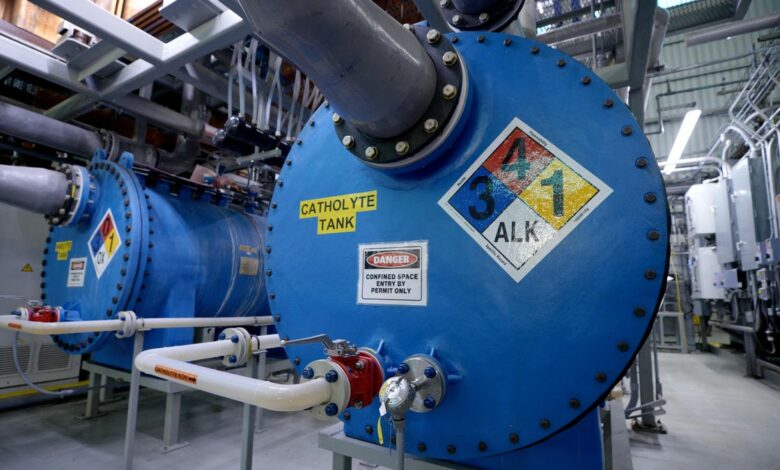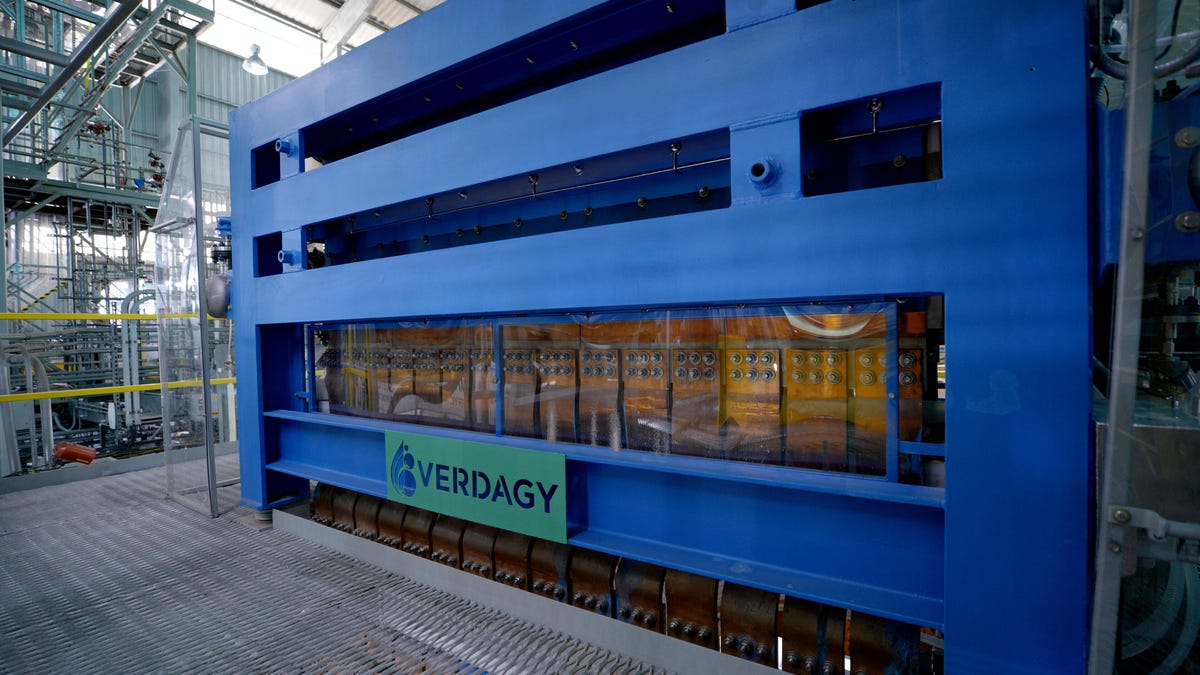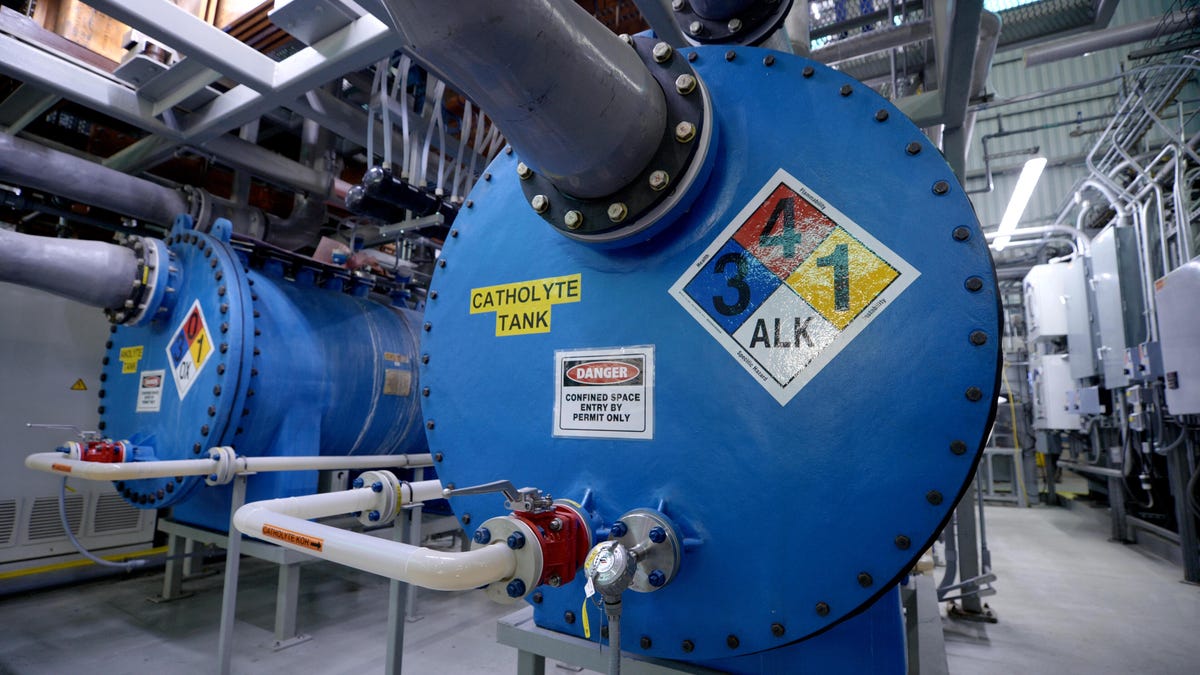Inside a green hydrogen pilot factory





We toured Verdagy’s pilot plant, where the company is testing its multi-million dollar electrolyzer, which is designed to convert renewable energy such as wind and solar power into hydrogen.
Verdagy CEO Marty Neese tells us that hydrogen is “the Swiss Army knife of molecules.” It can be used as a fuel source that produces no greenhouse gases; as a way to store excess renewable energy for later use, like a battery; and as part of the process for making ammonia for agricultural applications like fertilizer.

A look inside Verdagy’s green hydrogen pilot plant.
Hydrogen is already used in all of the above ways, but the problem is that it’s not always green. “Gray hydrogen,” as Neese calls it, is hydrogen made using the fossil fuel methane. Neese says Verdagy’s technology is designed to lower the cost of “green hydrogen,” or hydrogen made using water and electricity generated from renewable sources, to “decarbonize the use of hydrogen.”

A look inside Verdagy’s green hydrogen pilot plant.
The process that Verdagy’s technology makes possible is called alkaline water electrolysis. An electrolyte solution, in this case potassium hydroxide (KOH), is pumped through an electrolyzer, which adds electricity to the mix, splitting the water molecules into hydrogen on the negatively charged (cathode) side and oxygen on the positively charged (anode) side.
The KOH isn’t consumed, so it’s mixed with new water to replace what’s been split and pumped back into the electrolyzer to continue the process. Verdagy CTO Tom McWaid says the role of the electrolyte is simply to increase the conductivity of the water and make the process more energy efficient.

Tanks beneath Verdagy’s electrolyser hold the anolyte and catholyte solutions as they exit the electrolyser.
This process takes place in Verdagy’s “smart cells,” which work together to form one of the electrolyzers. Each cell can be monitored in real time, ramped up or down to respond to fluctuating energy costs, and swapped out or serviced as needed. Multiple electrolyzers can be grouped together to increase the output of a green hydrogen plant.
All in all, Neese says, an electrolyzer costs “millions of dollars,” but the estimated “tens of thousands of gallons of diesel equivalent hydrogen produced per day” will make green hydrogen globally competitive with fossil fuels by 2030.

The Verdagy electrolyser (left) consists of several smart cells (right). Cells can be monitored and exchanged if necessary.
Watch the video in this article to see the green hydrogen machines in action.




